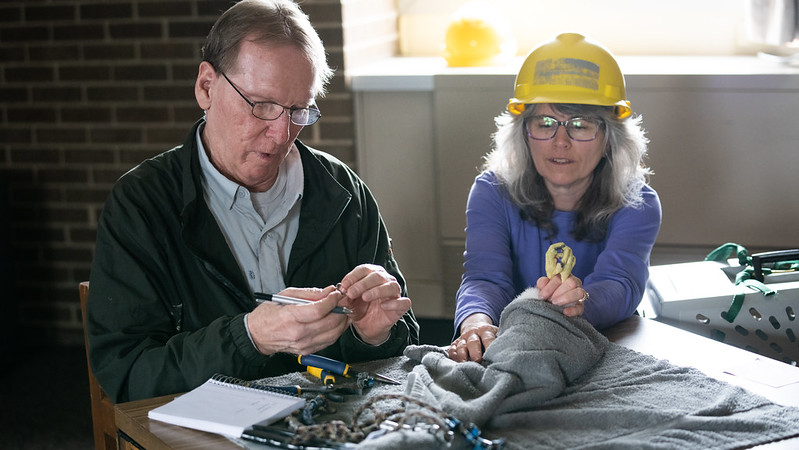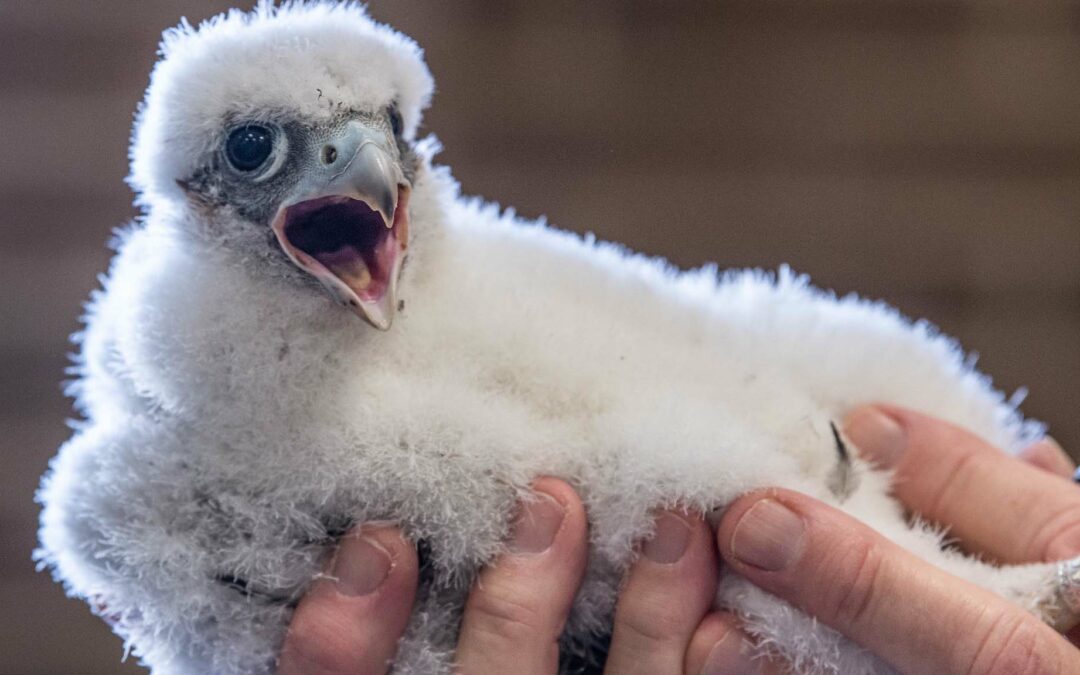Spring is in the air and the University of Wisconsin Oshkosh’s resident peregrine falcons are preparing for the hatch of several chicks.
Four eggs have been spotted and the female falcon, Julia, who has returned for an eighth year, is incubating them with relief from the male, Gaylord.
The roof-top nesting box at UWO’s Gruenhagen Conference Center is above parking lot 30 and is visible from Wisconsin Street. A view of activity inside the nesting box may be seen on the Peregrine falcon YouTube livestream.
Dana Hartel, a UWO staff member involved in the peregrine project, noted in early in February there was a “territorial dispute” when Julia returned and found another female falcon in attendance with Gaylord.
Julia won her place again and she and Gaylord were reacquainted. Three eggs were seen last week and a fourth egg appeared in the nest a couple of days later. Chicks are expected to hatch at the end of April.
Last March, chicks, Laurel, Honor and Triumph, were hatched at UWO. The three left their birth area within the year to find their own territory.
At least two dozen chicks have been produced at UWO since the peregrine nesting box was installed on campus.
“Peregrine falcons are listed as endangered in Wisconsin, so it is vital that UWO is part of this strong conservation program to offer a nest site to help support a strong future population,” said Brad Spanbauer, sustainability director at UWO.
Peregrine falcons are known as the fastest birds in the world, with high-speed hunting dives clocked at over 200 mph. Peregrines feed almost exclusively on birds they strike in midair and grasp with their talons. Blue jays and pigeons are among their favorite targets.

Falcon expert Greg Septon and UWO’s Dana Hartel band peregrine falcon chicks in May 2022.
Rebuilding the peregrine population
Researchers noted peregrine numbers declined in the United States due to widespread use of the pesticide DDT starting in the 1940s. DDT caused the eggs of peregrines and other raptor species to thin so much that many of the eggs broke during incubation. When DDT was identified as the issue and banned in 1972, raptors had accumulated so much DDT in their bodies and their bird numbers were so low that many species needed human help to regain their populations.
At the same time, habitat destruction was taking away the raptors’ opportunity to find proper nesting sites.
Assistance for peregrine falcons started coming through the development of nesting boxes that were strategically installed high atop buildings and other structures within peregrine territories.
In 2011, Greg Septon, founder of the Wisconsin Peregrine Falcon Recovery Project, was contacted about the possibility of constructing and installing a nesting box on the UWO campus. There were reports of falcons in the area and other factors, including the adjacent Fox River, were attractive to the peregrine falcons.
Gruenhagen Conference Center was chosen as the best site for a nesting box.
The box is cleaned each year—it’s something Hartel has done the past few years—typically in the fall when it will not disturb the birds preparing for the spring nesting season.
When the chicks are about three weeks old, they are given leg bands that have special letter/number combinations. The information is recorded and can identify the birds for future monitoring and research.
“The falcon program at UWO has been so successful over the years because of dedicated staff like Dawn Detloff (retired) and Dana Hartel, who make sustainability part of their job through supporting the program,” Spanbauer said. “Greg Septon who oversees the program, bands the chicks and produces annual reports on peregrine falcons in Wisconsin, is also an invaluable member of the team. I get a lot of emails asking about the falcons and thanking us for keeping this going—it’s a bright spot in everyone’s day.”
Learn more:

